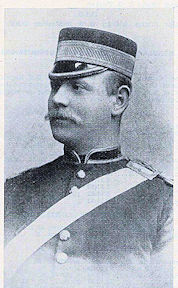
21071
Mechanist Sergeant Major
HENRY LONG WELLS
Royal Engineers
By
Lieutenant Colonel Edward De Santis, MSCE, P.E.,
MinstRE
(April 2023)

Figure 1. Mechanist Sergeant Major Henry Long
Wells, R.E.
(Image from The Sapper, February 1943)
INTRODUCTION
This research was prompted by Wells’ obituary that appeared in the February 1943 issue of The Sapper magazine. The majority of the information contained herein is from his obituary, Wells’ family trees found on Ancestry.com and Wells’ military service papers. Some inaccuracies may exist in the narrative due to the difficulty in deciphering the handwritten entries in his service papers regarding places and dates. All other sources cited in this work may be found in the REFERENCE section at the end of the narrative.
2. FAMILY INFORMATION AND EARLY LIFE
Family Information
Henry Long Wells was the son of George Wells (1817-1886) of Potterne, Wiltshire and his wife Sarah Wells, née Long (1824-1903) of Devizes, Wiltshire. George and Sarah had four other children; James Wells (1854-1913), Mary Ann Wells (1855-1927), William Long Wells (1858-1932) and George Long Wells (1865-1907), all born in Devizes, Wiltshire.[1]
|
Figure 2. The Crest of Devizes. Devizes is a market town and civil parish in Wiltshire. It developed around Devizes Castle, an 11th-century Norman castle, and received a charter in 1141. |
Except for James, all the other boys in the
Wells family were given their mother’s maiden name as their middle
names.
Early Life
Henry Long Wells was born in the Parish of St. James in Devizes, Wiltshire in October 1861. Because he was born after the closing date of the 1861 Census of England was taken, he first shows up with his family in the 1871 Census.
1871 Census of England
Census Place: 42 London Road, Devizes, Wiltshire.[2] |
|||||
Name and Surname of each Person |
Relation |
Marital Status |
Age |
Profession or Occupation |
Birthplace |
George Wells |
Head |
Married |
54 |
Ostler |
Potterne, |
Sarah Wells |
Wife |
Married |
47 |
Infant School Mistress |
Devizes, Wiltshire |
James Wells |
Son |
Single |
17 |
Carriage Trimmer |
Devizes, |
William [Long] Wells |
Son |
|
13 |
Scholar |
Devizes, |
Henry [Long] Wells |
Son |
|
9 |
Scholar |
Devizes, |
George Long Wells |
Son |
|
5 |
Scholar |
Devizes, |
NOTE: The names shown in brackets [
] have been added by the author. The middle names of the
individuals were not included by the census taker.
The 1881 Census of England shows the family still living in Devizes, but at a different address.
1881 Census of England
Census Place: 36a Estcourt Street, Devizes, Wiltshire. |
|||||
Name and Surname of each Person |
Relation |
Marital Status |
Age |
Profession or Occupation |
Birthplace |
George Wells |
Head |
Married |
64 |
Gardener |
Potterne, |
Sarah Wells |
Wife |
Married |
57 |
|
Devizes, Wiltshire |
Henry [Long] Wells |
Son |
Single |
19 |
Metal Turner |
Devizes, |
George [Long] Wells |
Son |
|
15 |
Groom |
Devizes, |
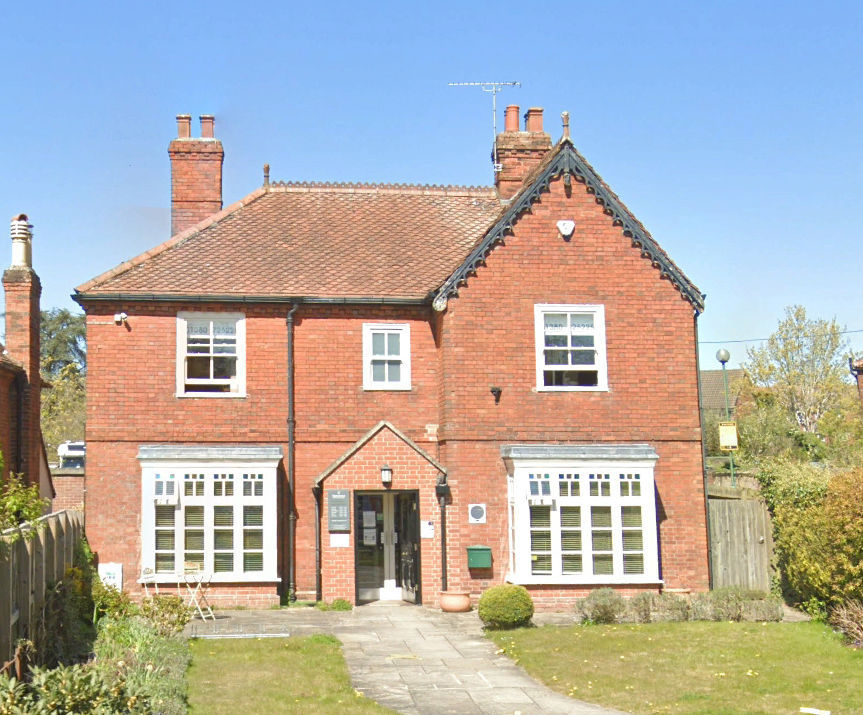
Figure 3. The Wells House at 36a Estcourt Street, Devizes,
Wiltshire.
(Image courtesy of Google Earth)
NOTE:
36a is the structure on the right.
According to the Wells family tree produced on Ancestry.com by Jeff Crisdale, in October 1885 at the age of 24, Henry Long Wells married Eliza Ann Roberts (1868-1947) in Gloucester, Gloucestershire. This information, if accurate, describes Henry’s first marriage. As will be seen later in this narrative, Henry’s military service papers indicate that he had a different wife. In any case, if he did marry a woman named Eliza Ann Roberts, they had no children and probably were divorced before June of 1882.
3. PHYSICAL DESCRIPTION
The following is a description of Henry Long Wells in 1886 at the time that he enlisted in the Army:
Age: |
24 years and 8 months |
Height: |
5 feet 5 ¾ inches |
Weight: |
145 pounds |
Chest measurement: |
35 inches |
Physical development: |
Very good |
Complexion: |
Fresh |
Eyes: |
Blue |
Hair: |
Brown |
Vaccination marks: |
Right arm, 2. Left arm, 4 |
When vaccinated: |
In infancy and in 1870 |
Distinctive marks: |
Mole on right breast. Two moles on back of neck |
Religious denomination: |
Church of England |
4. RECRUITMENT, ENLISTMENT AND TRAINING
Recruitment
Henry Long Wells was recruited for service in the Army by one Corporal J. Stainton of the Royal Artillery at Fort Rowner in Gosport, Hampshire. Fort Rowner was built circa 1858 as part of the outer defence line for Gosport along with Fort Brockhurst and Fort Elson to the North East and Fort Grange and Fort Gomer to the South West. The fort was later used as a barracks and then by the Royal Navy as a Degaussing[3] establishment. The fort was manned by companies from the Royal Garrison Artillery and in the 1880s it became the Depot of the 2nd Brigade Southern Division R.G.A.
There is nothing in his family records to indicate what Wells was doing at Fort Rowner when he was recruited. He was working at the time as an Apprentice for Brown and May, a firm out of Devizes. Brown and May of the 'North Wiltshire Foundry', were engineers and iron founders that also built portable steam engines and steam tractors.[4] Wells was a Turner and Fitter by trade and perhaps he was at Fort Rowner to repair an engine for the Royal Garrison Artillery unit stationed there. At any rate, Corporal Stainton somehow convinced Wells to enlist in the Army.
Enlistment
Wells enlisted in the Army at Fort Rowner on 30 June 1886 and was given a medical examination on that date to assess his fitness to serve.[5] As part of the enlistment procedures he was required to answer a number of questions regarding his life prior to enlisting. These questions are contained in his Short Service Attestation form and are summarized here.
Wells stated that he was 24 years and 8 months old at the time and that he had worked as an Apprentice Fitter and Turner for Brown and May in Devizes for a period of seven years. He told the Recruiting Officer that he was not married. This brings into question the entry in his family tree indicating that he had married Eliza Ann Roberts in October of 1885. Is the family tree entry incorrect or did Wells lie when he enlisted? Whatever the case might be, his statement that he was not married was accepted. His marital status will be discussed at greater length later in this report, and the facts as the author has discovered, are explained in detail.
Wells went on to say that he had never been convicted by Civil Power, that he had never previously been discharged from Her Majesty’s naval or military forces, that he was not currently a member of her Majesty’s naval or military forces or a member of a Volunteer force and that he had never been rejected for naval or military service. He told the Recruiting Officer that he was willing to enlist in the Royal Engineers and serve a term of 12 years and that he would be willing to serve beyond 12 years in case of an emergency.
A Certificate of Final Medical Examination was issued and Wells was declared fit for service in the Army. A Certificate of Primary Military Examination was also issued and he was declared fit to serve in the Royal Engineers, undoubtedly because of his trade as a Turner and Fitter with a rating of “Very Superior.” His Attestation was certified at Fort Rowner on the same day as his enlistment and he was issued Regimental Number 21071 in the Corps of Royal Engineers.
Now comes the interesting part of Wells’ story regarding his entry rank in the Corps. Henry Long Wells was enlisted as a Company Sergeant Major Military Mechanist. This rank was established about 1884 (or before) and men holding Military Mechanist ranks were found in the Establishment for Engineer Services and Submarine Miners. One can only assume that Wells was enlisted at this elevated rank because he was a “Very Superior” Turner and Fitter with seven years of experience as an Apprentice. Apparently there also was a need for Military Mechanists in the Corps at the time of his enlistment, so Wells was enlisted at this higher rank as an enticement (See Figure 9. ANNEX A: MILITARY MECHANISTS (ELECTRICAL AND MECHANICAL: Qualifications and Prospects).
As a Military Mechanist, Wells’ duties would be varied and interesting. They might include the installation, running and maintenance of power stations, workshops, pumping, compressed air and refrigeration plants and the lighting, heating and ventilation of buildings. When a new scheme of power supply or utilization was initiated the he might have to do a considerable part of the work involved in getting out the design and he must not only understand thoroughly the technical details, but must also be well acquainted with the military regulations on the subject. So with these challenges ahead of him, he began his military training program.[6]
Training
Following the administrative actions involved with his enlistment, Wells was sent off to the School of Military Engineering (S.M.E.) at Chatham for about 18 months for his preliminary electrical and mechanical training. He arrived at Chatham on 2 July 1886 and completed his training there in January 1888. Next he was off to Gosport, arriving there on 22 January 1888, where he attended the School of Electric Lighting (S.E.L.).
5. POSTINGS, ASSIGNMENTS AND CAMPAIGN SERVICE
Hong Kong (1889-1892)
On 21 March 1889 Company Sergeant Major (Military Mechanist) Wells departed the U.K. after 2 years and 264 days of home service, most of which was involved in training. He arrived in Hong Kong on 28 April 1889 and probably was post to the District Office at Victoria Barracks where he performed his mechanist duties. He met up with other Sappers there from the 9th Company, which had arrived in Hong Kong in December 1887.
Soon after Wells’ arrival the company lost two men: Sapper T.H. Hammersley on 29 April 1889 and Sapper R, Norman on 7 May 1889. The deaths of these men are commemorated on a monument erected by the men of the 9th Company to honor their fallen comrades. The name of Lieutenant H.O. Blackall, R.E. is also included on the monument. Blackall is known to have drowned. The other men listed on the monument may also have drowned, although the causes of their deaths are not known. Before Wells left Hong Kong another man, Company Sergeant Major A. Sinclair also died.
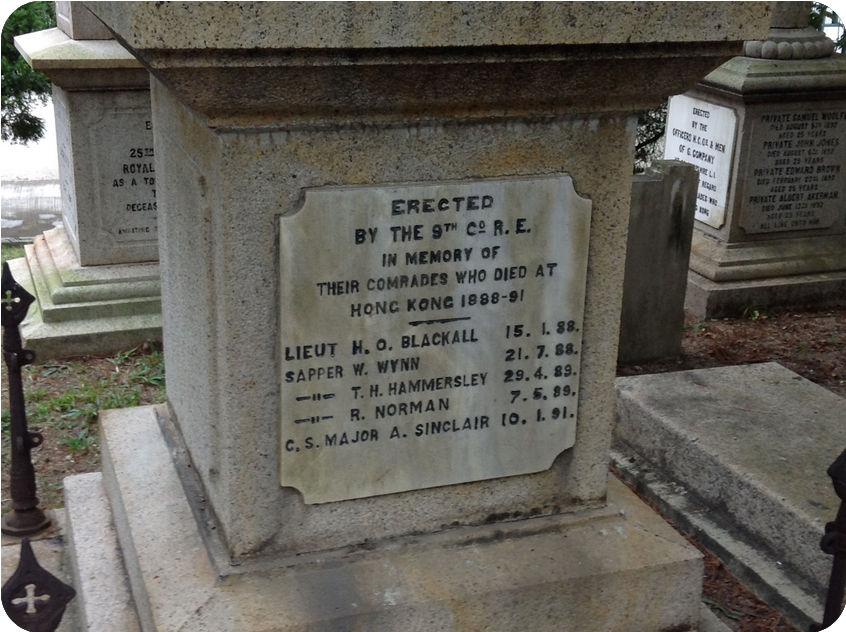
Figure 4. The 9th Company, Royal
Engineers Memorial Monument
to Comrades who Died at Hong Kong Between 1888 and 1891.
(Image courtesy of Wikipedia)
As a Mechanist Sergeant Major, Wells may have been attached to the 9th Company for administrative purposes, but he may in fact have worked directly for the Commander Royal Engineers (C.R.E.) from the Hong Kong District Office at Victoria Barracks.
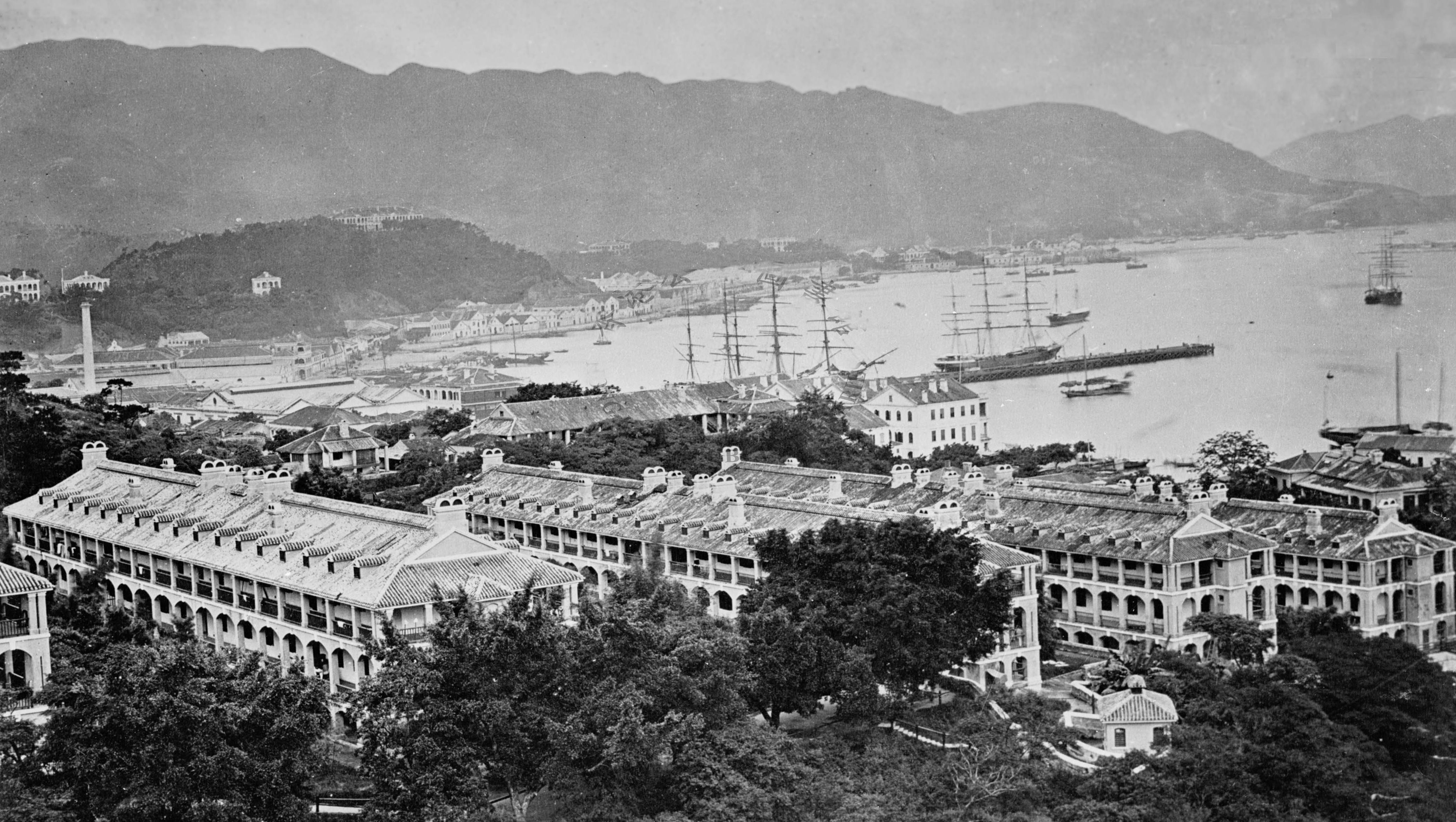
Figure 5. Victoria Barracks, Hong Kong.
(Image courtesy of Wikipedia)
Portsmouth (1892-1898)
Wells returned home to the U.K. on 14 April 1892 after serving 3 years and 24 days at Hong Kong. He was posted to Portsmouth where it appears that he served on the staff of the Southern Submarine Mining Militia under the Adjutant of that unit, Major H.P. Knight, R.E. and his assistant, Lieutenant Frederick W. Roberts, R.E. In this capacity he probably worked on installing and maintaining the engines and other mechanical equipment of the Volunteer Submarine Mining units at Portsmouth.
On 30 June 1892 Wells was promoted to the rank of Mechanist Quartermaster Sergeant (MQMS) and on 4 October 1892 he was awarded a Second Class Certificate of Education. On 14 April 1893 Major Knight approved Wells’ extension to complete 12 years of service with the Colours.
It appears that MQMS Wells was happy with his military service, so he requested that Major H. Foster, R.E, who had replaced Major Knight, allow him to continue in service to complete 21 years with the Colours. This request was approved by Major Foster on 23 December 1895.
Mauritius (1898-1902)
MQMS Wells departed the U.K. for Mauritius on 29 April 1898 after serving for 6 years and 15 days at home with the Southern Submarine Mining Militia. He arrived on the island of Mauritius on 8 June 1898 and probably was posted to the R.E. District Office there. Again he met up with fellow Sappers of the 43rd (Fortress) Company that was stationed there.[7] The role of a fortress company was to assist in the defence of ports and harbours that had significant military importance. This was accomplished by the use of mines and searchlights and by supporting the Royal Artillery garrison co-located with the fortress company. A Royal Engineers fortress company typically would provide the following services in defence of ports and harbours:
· Construction and maintenance of fortifications and gun emplacements.
· Construction of ammunition storage areas and magazines.
· Construction and maintenance of roadways.
· Water supply to units manning the fortifications.
· Supply of electricity to installations within the fortress area.
· Provide searchlight support to anti-aircraft and anti-shipping artillery batteries.
· Provide engineer works in and around the harbour and port areas.
Many of the tasks of the fortress company relied on the use of mechanical and electrical equipment, equipment that would require installation and maintenance by an individual with Wells’ skills as a mechanist. Certainly his work on Mauritius involved close contact with the 43rd (Fortress) Company.
On 20 October 1900 Wells was awarded a First Class Certificate of Education and on 1 April 1901 he was promoted to the rank of Mechanist Sergeant Major (Warrant Officer Class I). Wells served a total of 4 years and 54 days on Mauritius before being posted home.
Chatham (1902-1906)
Although his service records are not clear on this point, Wells may have served as an Instructor in the School of Military Engineering or with the R.E. Headquarters located at Chatham.
Because of his educational achievements and his demonstrated skills as a Mechanist, Wells was granted Service Pay, Class I at 7 pence per day on 1 April 1904. Service Pay in addition, to their regular pay, was granted to men in the Royal Engineers who demonstrated proficiency in their military trades. Service Pay was awarded in seven classes, with Class I being the highest.
In June 1904 he was awarded the Army Long Service and Good Conduct Medal (EVIIR) – without gratuity – in accordance with Army Order 772 of 1904 and on 19 September 1906 he was granted permission to continue in service beyond 21 years; that is, beyond June 1907. Permission to do so was another indication of Well’s proficiency as a Mechanist.
Cork (1906)
Mechanist SGM Wells was posted to Cork, Ireland on 2 November 1906 where he reported to the C.R.E. there, Brevet Colonel A.C. MacDonnell. The R.E. units stationed at Cork included the 6th (Fortress) and 33rd (Fortress) Companies.[8] As with the company stationed on Mauritius, these fortress companies utilized electrical and mechanical equipment with which Wells was thoroughly familiar. His short visit to Cork may have been the result of some emergency repairs required by some of the fortress companies’ equipment. He completed this work quickly and within three weeks was ready to depart for another tour of duty in Hong Kong.
Hong Kong (1906-1909)
Wells departed for Hong Kong on 23 November 1906 after completing 4 years and 133 days of home service. At Hong Kong he probably was posted again to Victoria Barracks where he worked for the C.R.E., Lieutenant Colonel H.N. Dumbleton, R.E. Other Sapper units at Hong Kong at this time were the 25th (Fortress) Company and the 40th (Fortress) Company,[9] two units with plenty of equipment for Wells to operate and maintain.
While in Hong Kong he reached the limit of his extension of service until June 1907; however, since he was abroad and performing excellent work his service was extended another two years. Then, on 29 June 1909, Wells again asked for permission to extend his service and permission was again granted to extend his service for another two years until 1911.
Cork (1909-1911)
Wells arrived home from Hong Kong on 22 December 1909 after serving 3 years and 50 days there. He was posted to the office of the C.R.E. of the Cork District, Lieutenant Colonel R.E. Edwards, R.E. The 33rd (Fortress) Company[10] was still at Cork when he arrived. Wells served at Cork until 30 October 1911 when he was discharged from the Army.
After his discharge he was appointed a Civilian Military Mechanist at Shoeburyness District in Essex. Apparently his skills as a Military Mechanist were well known in the various Royal Engineers districts around the country and the district in Shoeburyness apparently required civilian help in addition to its military personnel. In this district he worked for the C.R.E., Lieutenant Colonel E.A.T. Tudor[11] with units assigned to Eastern Coast Defenses.
Home Service (1917-1918)
In order to serve in the Great War of 1914-1918, Well re-enlisted in the Royal Engineers and was posted as an Assistant Inspector of Royal Engineers Machinery. This position would make him an assistant to an R.E. officer who was an Inspector of Royal Engineers Machinery (I.R.E.M.). These men would travel to various locations to inspect equipment that was being used by the various R.E. units in the field. All of Wells’ postings during this period were at home.
The following sections are presented in tabular form to summarize Wells’ medical history, promotions, appointments, military training and qualifications and the medals that he was awarded during his time in the Army. They are provided to give the reader easy access to these aspects of his military career. The tables are followed by sections dealing with his marriage, personal information and post-service life.
6. MEDICAL HISTORY
The table below is a summary of the medical history of Sergeant Major Wells during his time in the Army.
Location of Medical Facility |
Date Admitted |
Date Released |
Ailment and Treatment |
Fort Rowner, Gosport |
30 Jun |
30 Jun |
Medical examination on enlistment. |
Chatham |
19 Aug |
19 Aug |
Re-vaccinated against smallpox. |
Hong Kong |
29 May |
3 Jun |
Admitted to hospital with a fever; cause undisclosed in his records. |
Hong Kong |
12 Jul |
5 Aug |
Admitted to hospital. Soft palate perforated by an ulcer. |
Plymouth |
14 Feb |
19 Feb |
Fractured his right wrist in an accident on duty.[12] |
Hong Kong |
23 Jul |
7 Aug |
Admitted to hospital with an infection. |
Hong Kong |
28 Sep |
1 Oct |
Admitted to hospital with gastritis. |
London |
9 Nov |
9 Nov |
Admitted to Royal Hospital Chelsea for a discharge medical examination. Chelsea No. 99341. |
7. PROMOTIONS AND APPOINTMENTS
Promotions: Wells received the following promotions during his time in service:
Date of Promotion or Appointment |
|
30 June 1886 |
Appointed a Military Mechanist Company Sergeant Major upon enlistment. |
30 June 1892 |
Promoted to Military Mechanist Quartermaster Sergeant. |
1 April 1901 |
Promoted to Mechanist Sergeant Major. |
Appointments: Wells received the following appointments during his time in service:
Date of Appointment |
|
21 March 1889 |
Military Mechanist, Hong Kong District. |
14 April 1892 |
Military Mechanist, Southern Submarine Mining Militia. |
8 June 1898 |
Military Mechanist, Mauritius District. |
22 June 1902 |
Military Mechanist, Chatham and Cork Districts. |
23 November 1906 |
Military Mechanist, Hong Kong District. |
23 December 1909 |
Military Mechanist, Cork District. |
1913 |
Civilian Military Mechanist, Shoeburyness District. |
1917 |
Assistant Inspector of Royal Engineers Machinery. |
8. MILITARY TRAINING AND EDUCATION
Military Training: Wells received the following military training during his time in service:
Date |
Location and Course |
2 July 1886 |
School of Military Engineering, Chatham. Military Mechanist Mechanical Course. Rating: “Very Superior” Turner and Fitter. |
22 January 1888 |
School of Electric Lighting, Gosport. Military Mechanist Electrical Course. |
Education: Wells received the following Certificates of Education during his time in service:
Date |
Achievement |
4 October 1892 |
Awarded a Second Class Certificate of Education. |
20 October 1900 |
Awarded a First Class Certificate of Education. |
9. MEDALS, AWARDS AND DECORATIONS
Mechanist Sergeant Major Wells was awarded the Army Long Service and Good Conduct Medal (EVIIR) in June of 1904 in accordance with Army Order 772 of 1904. As he did not see active service during any campaign, including the Great War, he was not authorized to receive any other medals. There is no Great War Medal Index Card on file for him.
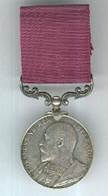
Figure 6. The Army Long Service and Good Conduct Medal
(EVIIR)
of the Type Awarded to Mechanist Sergeant Major
Wells.[13]
(Image
from Wikipedia)
10. RELEASE FROM SERVICE
Sergeant Major Wells was released from service in 1918, presumably right after the end of the Great War. His total service was reckoned as shown in the tables below:
Location |
|
Chatham |
30 June 1886 – 21 January 1888 |
Gosport |
22 January 1888 – 20 March 1889 |
Hong Kong |
21 March 1889 – 13 April 1892 |
Portsmouth |
14 April 1892 – 29 April 1898 |
Mauritius |
30 April 1898 – 21 June 1902 |
Chatham |
22 June 1902 – 1 November 1906 |
Cork |
2 November 1906 – 22 November 1906 |
Hong Kong |
23 November 1906 – 21 December 1909 |
Cork |
22 December 1909 – 30 October 1911 |
Location |
|
Home Service |
15 years, 1 month and 15 days |
Service Abroad |
10 years and 128 days |
Total Service |
25 years and 123 days |
NOTE: The periods of service in the table directly above only includes his service from 30 June 1886 to 30 October 1911. His service from 1917 to 1918, during the Great War, is not included as the exact dates are not known. His total service was beyond 21 years because:
· On 19 September 1906 he was granted permission to continue in service beyond 21 years for a period of 2 years (to June 1909).
· On 29 June 1909 he was permitted to continue in service for an additional period of 2 years (to June 1911). He actually got to serve until October 1911.
Marriage
Wells’ marriage situation has been touched upon in Section 4 of the narrative. Two family trees are published on Ancestry.com, one by Jeff Crisdale and the other by Catrina Scott. These family trees show that Henry Long Wells married one Eliza Ann Roberts (1868-1947) in Gloucester in October 1885. The family trees show very little about Eliza except that she was born on 18 February 1868 (location unknown) and that she married Wells when she was 17 years old. She resided in Wiltshire in 1939 and she died in Swindon in September 1947 at the age of 79.
There is much evidence to indicate that Wells did not marry a woman named Eliza Ann Roberts. First of all his Attestation paper shows that he claims he was not married in June 1886 when he enlisted. So if he was telling the truth, he could not have married Eliza in October 1885.
Secondly, his service papers show that he married one Julia Edith Apsey (or Apsay), a spinster, on 1 June 1892 at Portsea, Southampton, with the permission of his commanding officer. After their marriage Wells was immediately placed on the married rolls. At the time, Wells was serving with the Submarine Miners in Portsmouth. Furthermore, the England & Wales Civil Registration Register for marriages between 1837 and 1915 shows that Julia Edith Apsey was married to Henry Wells on Portsea Island during the Apr-May-Jun quarter of 1892. This coincides with the entry in Wells’ service papers indicating that he married Julia on 1 June 1892 at Portsea, Southampton. Additional evidence to indicate that Henry and Julia were married is found in the 1911 Census of Ireland, taken on 2 April 1911, which shows that the couple were living in Cork at the time. In 1911 Henry was serving in the R.E. District Office in Cork.
The 1911 Census of Ireland describes Julia Edith Wells, 41, as the wife of Henry Wells. She had been born in England about 1870 and they had been married for 18 years (with an inferred marriage date of 1893). Julia was a member of the Church of England. She and Henry were residing at 34 Crosshaven Town in Templebreedy, Cork. All this information indicates that Henry Long Wells was married to Julia Edith Aspey, as indicated in Wells’ service papers, and that the information on the family trees is incorrect. The family trees are correct, however, where they indicate that Henry and his spouse had no children.
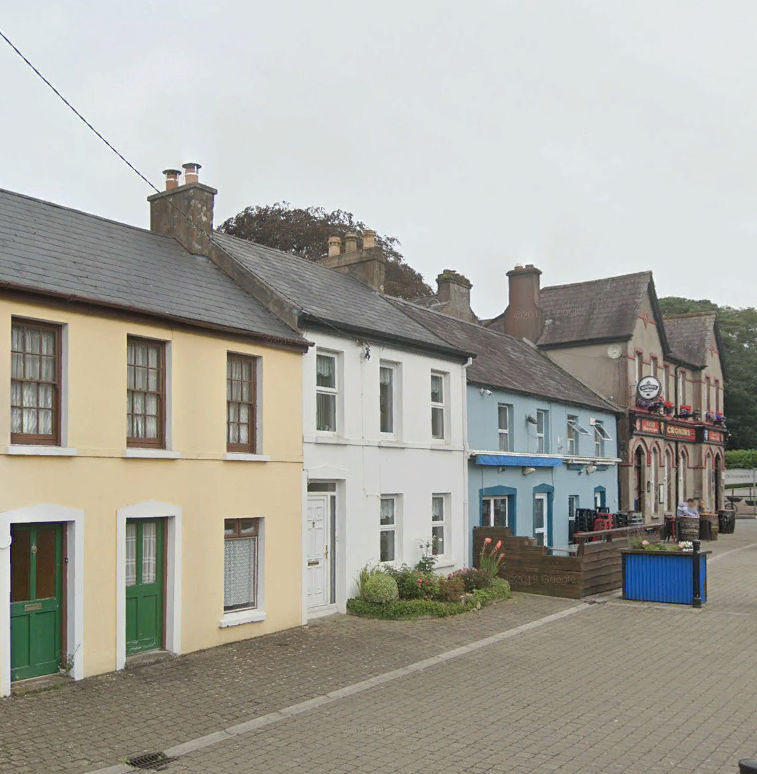
Figure 7. Crosshaven Town, Cork, Ireland.
(Image
courtesy of Google Earth)
Parents
Henry’s father, George Wells, died in Potterne, Devizes, Wiltshire on 4 July 1886 only two days after Henry arrived at Chatham to begin his mechanist training. He was 69 years of age. George was buried on 7 July 1886 in St. James’s Churchyard, Southbroom, Devises. The start of Henry’s training may have been delayed as he surely must have requested leave to attend his father’s funeral.
Henry’s mother, Sarah Wells, died in Devizes on 24 October 1903 at the age of 79. Henry had returned from Mauritius about 16 months prior to her death and was stationed at Chatham when she died.
Siblings
James Wells (1854-1913) was born in Devizes, Wiltshire. He married Emma Grant (1854-1936) on 20 March 1879 in Southbroom, Devizes and they had six children, four boys and two girls. James worked as a Coach Trimmer. He died in Swindon on 28 June 1913 at the age of 59.
Mary Ann Wells (1855-1927) was born in Devizes in December 1855. She married Robert Wiltshire Sims (1845-1908) in Devizes on 24 February 1894. Robert and Mary Ann had one child, a daughter. Mary Ann Sims died in Melksham, Wiltshire on 20 June 1927 at the age of 71.
William Long Wells (1858-1932) was born in Devizes in January 1858. He married Ellen Teodore Hill (1865-1941) in Wimbledon, Surrey on 9 October 1886. The couple had seven children, five boys and two girls. William Wells was a Carpenter and Joiner by Trade. He died in July 1932 in Kingston, Surrey at the age of 74.
George Long Wells (1865-1907) was born in Devizes, Wiltshire sometime before 6 August 1865, the date that he was baptized in Southbroom. George did not marry. He died at the early age of 42 on 17 August 1907 in Stert, Wiltshire, where he was buried on 21 August.
12. POST SERVICE LIFE
After finally leaving the Army in 1918, Henry Long Wells returned to his position as a Civilian Military Mechanist at Shoeburyness. On 1 April 1919 he began receiving his military pension at the rate of 94½ pence per day. On 30 October 1926 he retired from his position at Shoeburyness, having reached the age of 65.
Wells died on 23 December 1942 at 28 Caulfield Road in Shoeburyness, Essex at the age of 81. His death was certified by C.C. Ryan, MD who listed his cause of death as a cerebral hemorrhage. Present at his death was one M. Potter of 103 Richmond Avenue in Shoeburyness.[14] No information was found regarding his wife’s death or the probate of his Will.
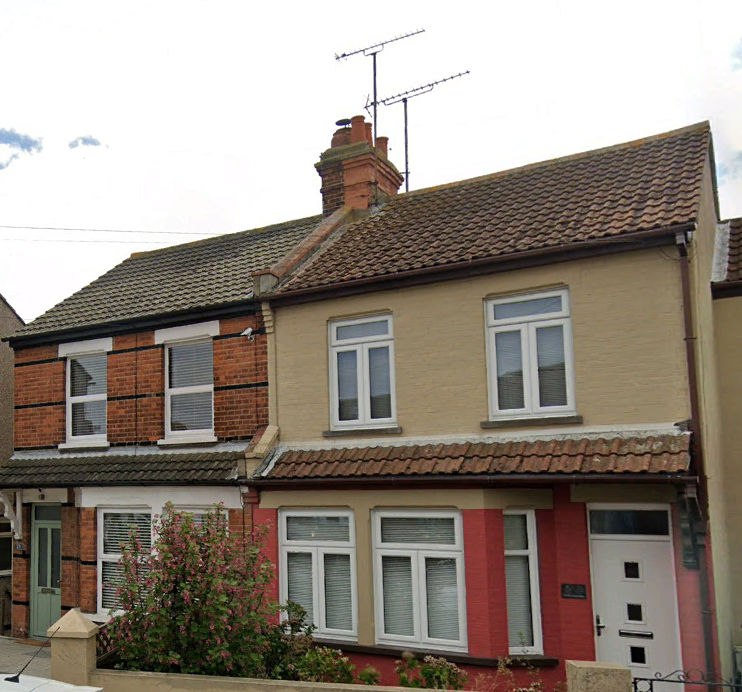
Figure 8. 28 Caulfield Road in Shoeburyness,
Essex.
(Image courtesy of Google Earth)
Figure 9. ANNEX A
(image
from The Sapper, February 1943)
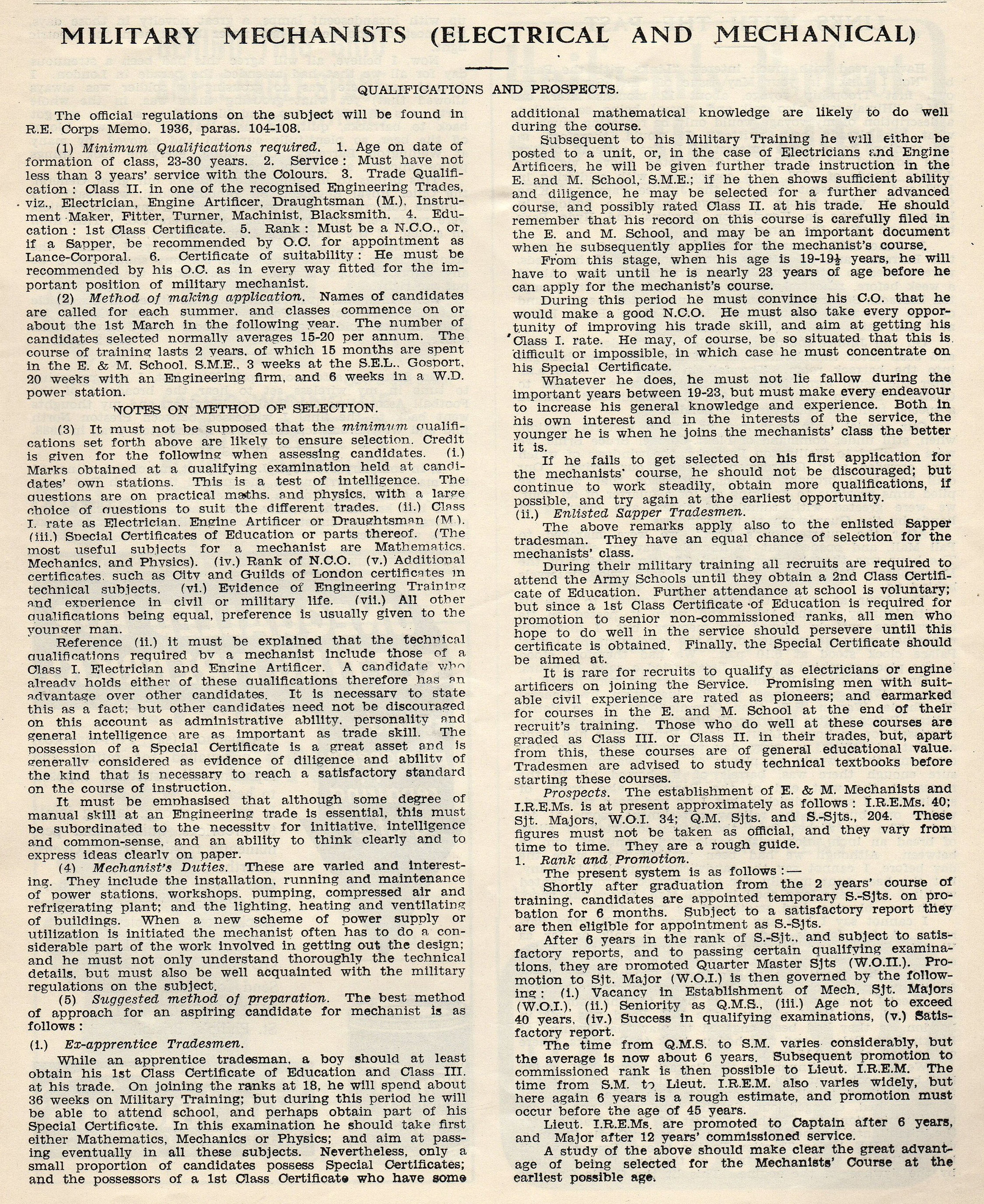
:
REFERENCES
Civil Documents
Baptism Certificate of Henry Wells.
Census
1871 Census of England, Devizes, Wiltshire.
1881 Census of England, Devizes, Wiltshire.
1911 Census of Ireland.
Family Trees
Henry Long Wells (by Jeff Crisdale).
George Wells - father (by Jeff Crisdale).
Sarah Long - mother (by Jeff Crisdale).
Eliza Ann Roberts - wife (by Jeff Crisdale).
Eliza Ann Roberts – wife (by Catrina Scott).
James Wells – brother (by Jeff Crisdale).
George Long Wells – brother (by Jeff Crisdale).
Internet Web Sites
Royal Hospital Chelsea Pensioner Admissions and Discharges, 1715-1925
England & Wales, Civil Registration, Marriages, 1838-1915.
Wikipedia: Fort Rowner.
Brown and May https://tractors.fandom.com/wiki/Brown_and_May
Military Service Papers
Short Service Attestation.
Description on Enlistment
Certificate of Final Medical Examination.
Certificate of Primary Military Examination.
Certificate of Approving Field Officer.
Medical History.
Statement of Services.
Military History Sheet.
Pension Records.
Certified Copy of an Entry of Death.
Periodicals
The Sapper, February 1943, p. 102.
The Sapper, June 1939, p. 287.
The Royal Engineers List, 1902.
The Royal Engineers List, 1905.
The Royal Engineers List, 1908.
The Royal Engineers List, 1912.
ENDNOTES
[1] Wells family tree.
[2] This address no longer exists.
[3] Degaussing is a process in which systems of electrical cables are installed around the circumference of ship's hull, running from bow to stern on both sides. A measured electrical current is passed through these cables to cancel out the ship's magnetic field.
[4] Wikipedia.
[5] The physical description in Section 3 came from this medical examination.
[6] Annex A.
[7] The Royal Engineers List, 1902.
[8] Ibid., 1905.
[9] Ibid., 1908.
[10] Ibid., 1912.
[11] Later, Brigadier General E.A.T. Tudor, CMG (1865-1925).
[12] A Board of Inquiry wells held to determine the cause of this fracture. It was judged that he fractured his wrist on duty, but that the injury would not preclude him to efficiently carry on his services as a soldier.
[13] This is not Wells’ medal. The image has been included here to simply show what his medal would have looked like.
[14] Death certificate